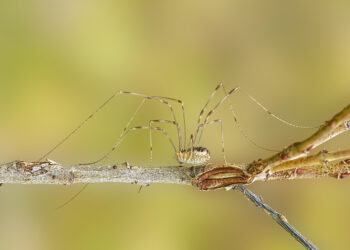A strange evolutionary alliance between trees and the ants that guard them has a sinister explanation, a new study suggests, after studying ants hooked on nectar.
Bodyguard ants and addiction
In Central America, ants act as bodyguards for acacia trees, defending them not only from weeds, but also from animals, in exchange for accomodation and food – this has traditionally been seen as one of the most consistent and remarkable alliances in nature.
But Martin Heil of Cinvestav Unidad Irapuato in Mexico reports there’s more than meets the eye when it comes to tree snacks. The tree’s sugary offerings are laced with an enzyme that prevents the ants from eating other sources of sugar – one sip, and they’re hooked to the tree and only the tree, in classic type of addiction.
“It was surprising to me that the immobile, ‘passive’ plant can manipulate the seemingly much more active partner, the ant,” says Heil.
The report illustrates how even in the seemingly mutually advantageous partnerships in nature, one part takes more out of the deal than the other.
Heil compares the situation to a dairy company that sells lactose-free milk chemically altered to render its customers unable to digest normal milk. Drink it, and you can only eat that brand forever.
Sneaky trees

Ants love eating sweet foods; most of the foods they eat, such as plant sap, are rich in a sugar called sucrose. The ants digest this with an enzyme called invertase, which basically breaks the sucrose into smaller sugars. In 2005, Heil had previously shown that all of the workers of the acacia ant Pseudomyrmex ferrugineus lack invertase – and therefore cannot digest sucrose. Fortunately for them, the tree compensates for this impairment by secreting invertase into its nectar, providing the ants with a predigested meal. Quite a neat trick, apparently, but isn’t it a little just too perfect? It does seem a little strange, how things worked out just fine, so Heil set out to understand what happens behind the curtain.
What he found out was that the tree’s sugary treats not only contained invertase, but they also contained something extra – chitinase enzymes that completely block invertase development in ants. So basically the tree takes away their ability to digest, and instead, offers them pre-digested food, quite a neat, sneaky trick.
“Ain’t nature grand?” says Todd Palmer of the University of Florida, who studies ants and acacias. “What looks from the outside as another case of digestive specialization appears to be a sneaky manipulation on the part of the acacia to increase ant dependence.”
Enzymes and bodyguards
Now, researchers want to go even deeper, and find out exactly how a plant’s chitinase could block an ant’s invertase.
“All the biochemists whom I talked to told me that there is no way one of these enzymes can inhibit the other. There is simply no known biochemical mechanism through which this could happen,” he says. “It adds to our understanding of why co-evolved systems persist even when they may not be required for both partners,” says Corrie Moreau, an evolutionary biologist from the Field Museum in Chicago.
So either he’s missing something, or this is truly a revolutionary mechanism. But there’s another interesting question: why don’t young workers try another food source, while their digestive system hasn’t been tampered? Heil thinks this is because nectar is almost always their first adult meal, either because it is the closest food or because the ants are fed the nectar by their nest-mates.
“Since the first dose of nectar is enough to reduce invertase activity, they remain trapped,” he says.
Scientific Reference: Partner manipulation stabilises a horizontally transmitted mutualism
Martin Heil1,*, Alejandro Barajas-Barron1, Domancar Orona-Tamayo1,2, Natalie Wielsch3, Ales Svatos3






